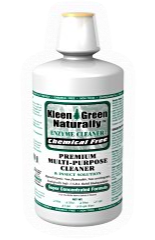- Home
- Scabies
Scabies



What Are Scabies?
- Scabies is a skin infestation caused by the burrowing eight-legged mite Sarcoptes scabiei (see pictures above). A. tiny mite that has infested humans for 2,500 years, this tiny creature is just barely visible to the human eye.
- It is common among children.
- Scabies is characterized by severe itching, particularly at night, and small blister-like eruptions or short, wavy linear burrows in the skin, expecially in the webs between the fingers, on wrists, elbows, armpits, waist, buttocks and genitals.
- You may experience severe and continuous itching (especially at night, which can keep sufferers awake all night). A good clue that scabies may be the cause is if several members of the same family or contacts have the same symptoms.
- The female insect, (a tiny, eight-legged creature with a round body) seeking warmth, burrows into the skin where she lays 1 - 3 eggs daily and produces secretions which often cause an allergic reaction. A small, hard to see, reddish zigzag blister usually marks the trail of the insect as she lays her eggs.
- When the eggs hatch, the larvae travel to the skin surface where they develop into adult mites. It might be a month before a newly infested person will notice the itching, especially in people with good hygiene and who bathe regularly.
- Scabies is transmitted by close personal contact with an infected individual, is highly contagious, and spreads rapidly.
- Scabies spreads rapidly under crowded conditions where there is frequent skin-to-skin contact between people, such as in hospitals, institutions, child-care facilities, and nursing homes.
- Clothing can be another way to transferr scabies.
- If scratched off the skin, it can live in bedding up to 24 hours.
Scabies Facts
- Scabies is contracted by direct, prolonged, skin-to-skin contact with a person already infested with scabies. Contact must be prolonged (a quick handshake or hug will usually not spread infestation). Infestation is easily spread to sexual partners and household members. Infestation may also occur by sharing clothing, towels, and bedding.
- People with weakened immune systems and the elderly are at risk for a more severe form of scabies, called Norwegian or crusted scabies.
- Once away from the human body, mites do not survive more than 48-72 hours. When living on a person, an adult female mite can live up to a month.
- You cannot get scabies from your pet! Pets get a different kind of scabies called mange. If your pet is infested with scabies and they have close contact with you, the mite can get under your skin and cause itching and skin irritation. However, the mite dies in a couple of days and does not reproduce. The mites may cause you to itch for several days, but you do not need to be treated with special medication to kill the mites. Until your pet is successfully treated, mites can continue to burrow into your skin and cause you to have symptoms.
- For a person who has never been infested with scabies, symptoms may take 4-6 weeks to begin. For a person who has had scabies, symptoms appear within several days. You do not become immune to an infestation.
- Diagnosis is most commonly made by looking at the burrows or rash. A skin scraping may be taken to look for mites, eggs, or mite fecal matter to confirm the diagnosis. If a skin scraping or biopsy is taken and returns negative, it is possible that you may still be infested. Typically, there are fewer than 10 mites on the entire body of an infested person; this makes it easy for an infestation to be missed.
- Anyone who is diagnosed with scabies, as well as his or her sexual partners and persons who have close, prolonged contact to the infested person should also be treated. If your health care provider has instructed family members to be treated, everyone should receive treatment at the same time to prevent re-infestation.
- Itching may continue for 2-3 weeks and does not mean that you are still infested. Your health care provider may prescribe additional medication to relieve itching if it is severe. No new burrows or rashes should appear 24-48 hours after effective treatment.
- Note: We recommend avoiding the use of poison-based treatments. Traditional medicine is to treat with poison based lotions for scabies. Always follow the directions provided by your physician or the directions on the package insert. Apply lotion to a clean body from the neck down to the toes and left overnight (8 hours). After 8 hours, take a bath or shower to wash off the lotion. Put on clean clothes. All clothes, bedding, and towels used by the infested person 2 days before treatment should be washed in hot water; dry in a hot dryer. A second treatment of the body with the same lotion may be necessary 7-10 days later. Pregnant women and children are often treated with milder scabies medications.
There is a similar type of scabies called Norwegian Scabies. For more information, see the bottom of this page.
The above information is provided as educational. Please see your doctor if you feel you have a skin problem.
How to remove scabies from your body with Kleen Green™
Suggested Dilution: 1 oz of Kleen Green™ to 7 oz of water
- Apply directly on affected area with finger, cotton ball or swab. Massage diluted Kleen Green™ onto dry skin. Allow Kleen Green™ to dry when applied to the affected area.
- Repeat this topical application daily to insure complete coverage, preferably morning, noon, night and before bedtime. Continue using until symptoms no longer persist, usually 1 to 3 weeks depending on degree of infestation.
- Kleen Green™dilution can be applied as often as needed.
- For best results: Take a soaking bath, preferably in the late afternoon or early evening, using 4 to 8 oz of Kleen Green™ in a tub of warm water. Soak approximately 20 minutes. Do not use soap or other products during this soaking process. Air dry. After body is completely dry, apply diluted Kleen Green™ solution to problem areas. Do not rinse. This soaking bath may be done daily.
- For external use only. If contact is made with eyes, rinse thoroughly with clean cool water. Can cause eye irritation. If skin irritation or infection develops consult your physician or dermatologist. Keep this and all cleaners out of the reach of children.
- Note: Scratching an infected area and then another non-infected area on the body can easily transfer scabies.
How to remove scabies mites from your home with Kleen Green™
- Wash linens, towels, undergarments and other clothing in a washing machine with 1-2 oz of Kleen Green™.
- Place stuffed toys in a plastic bag for 2 days
- Toss blankets and bedspreads in a hot dryer for 20 minutes
- Vacuum thoroughly - daily if necessary

Why and How Kleen Green™ Works
Insects are made up of a high concentration of protein. When Kleen Green is introduced to the insect, the enzymes act and can cause the insect to molt (shed its outer coating) prematurely. Poison pesticides attack the nervous system of the insect, which is not always effective. University research has noted that some insects have developed a resistance to poison based products. This revolutionary product is now available to the general consumer. Preformed enzymes have been used widely in restaurant and institutional settings for the last ten years, due to their low toxicity and superior cleaning properties. They are also becoming widely accepted in the field of pest cleaning as enzymes leave no toxic residues and the enzymatic effect on the insect exoskeleton is quick and safe. SAFE for Gardens, Plants, Ponds and around children and pets!
A Natural Alternative to Toxic Products
- Fast Acting
- Does Not Produce Toxic Fumes
- Extremely Economical
- More Effective and Safer than Pesticides!
Kleen Green: Non-Toxic, Pesticide Free Spray
Super Concentrated - Pesticide Free
- 8 oz makes 2 quarts
- 16oz makes 4 quarts
- 32oz makes 8 quarts
- 64 oz makes 16 quarts
- 128oz makes 32 quarts
- Also available in 5 gallons
THE MOST SUPERIOR NON-TOXIC REMEDY ON THE MARKET TODAY
| INGREDIENTS: Active ingredients: A specially formulated broad spectrum of NATURAL enzymes (protease, amylase, cellulose, lipase) derived from innocuous yeast strains. FDA good grade ingredients. GRAS (FDA Generally Regarded As Safe) List Parts 184 and 186. This product is not a pesticide. |
How to use Kleen Green™ Enzymes
- This nontoxic product provides superior cleaning in the entire home eradicating and digesting dirt, bacteria and microscopic mites - even dust mites.
- Spray and/or mist cracks, crevices, around window and door frames daily for several days. Persistence and patience will give the best results when using Kleen Green. No need to leave your home like that with pesticides. Kleen Green does not produce any toxic fumes. Kleen Green Enzymes eliminates offensive odors.
- Safe to spray on all surfaces: carpet, bedding, walls, floors and furniture.
- Kleen Green may be used in the laundry and in carpet cleaning machines.
- Pour 1oz. of concentrate directly into wash load without detergent for a fresh clean laundry.
- TIP: Kleen Green is safe to use in humidifiers. Pour 2 to 4 oz. into your humidifier for eliminating odors and controlling air born bacteria, germs and pests.
Scabies prevention
- Bathe, soak or wash using diluted Kleen Green™ Enzymes, Borax and/or sulfur. Routinely using a sauna may also be helpful.
- Regularly change and wash all clothing, bedding, towels and underwear.
- When laundering towels, clothing and bedding use hot water with Kleen Green™ or Borax.
- Children should not share clothing or other personal articles such as hair brushes, combs or towels with one another.
- When an outbreak of scabies is reported be alert for symptoms in members of your family.
- If your child has scabies, please notify the school authorities so the school will be alerted to check for any outbreak.
- Note: The above measures are suggested to help prevent reinfestation. However, even the medicated (poison) lotion treatment for scabies does not provide long-term protection and reinfestation is always possible. Try to avoid the use of poison on your person or child at all costs.
Read our Kleen Green customer testimonials to learn more about the use and effectiveness of Kleen Green for treating Scabies.
How did I get scabies?
By direct, prolonged, skin-to-skin contact with a person already infested with scabies. Contact must be prolonged (a quick handshake or hug will usually not spread infestation). Infestation is easily spread to sexual partners and household members. Infestation may also occur by sharing clothing, towels, and bedding.
Who is at risk for severe infestation?
People with weakened immune systems and the elderly are at risk for a more severe form of scabies, called Norwegian or crusted scabies.How long will mites live?
Once away from the human body, mites do not survive more than 48-72 hours. When living on a person, an adult female mite can live up to a month.Did my pet spread scabies to me?
No. Pets become infested with a different kind of scabies mite. If your pet is infested with scabies, (also called mange) and they have close contact with you, the mite can get under your skin and cause itching and skin irritation. However, the mite dies in a couple of days and does not reproduce. The mites may cause you to itch for several days, but you do not need to be treated with special medication to kill the mites. Until your pet is successfully treated, mites can continue to burrow into your skin and cause you to have symptoms.How soon after infestation will symptoms begin?
For a person who has never been infested with scabies, symptoms may take 4-6 weeks to begin. For a person who has had scabies, symptoms appear within several days. You do not become immune to an infestation.How is scabies infestation diagnosed?
Diagnosis is most commonly made by looking at the burrows or rash. A skin scraping may be taken to look for mites, eggs, or mite fecal matter to confirm the diagnosis. If a skin scraping or biopsy is taken and returns negative, it is possible that you may still be infested. Typically, there are fewer than 10 mites on the entire body of an infested person; this makes it easy for an infestation to be missed.Can Scabies be treated?
We recommend avoiding the use of poison based treatments.Traditional medicine is to treat with poison based lotions for scabies. Always follow the directions provided by your physician or the directions on the package insert. Apply lotion to a clean body from the neck down to the toes and left overnight (8 hours). After 8 hours, take a bath or shower to wash off the lotion. Put on clean clothes. All clothes, bedding, and towels used by the infested person 2 days before treatment should be washed in hot water; dry in a hot dryer. A second treatment of the body with the same lotion may be necessary 7-10 days later. Pregnant women and children are often treated with milder scabies medications.Who should be treated for scabies?
Anyone who is diagnosed with scabies, as well as his or her sexual partners and persons who have close, prolonged contact to the infested person should also be treated. If your health care provider has instructed family members to be treated, everyone should receive treatment at the same time to prevent reinfestation.How soon after treatment will I feel better?
Itching may continue for 2-3 weeks, and does not mean that you are still infested. Your health care provider may prescribe additional medication to relieve itching if it is severe. No new burrows or rashes should appear 24-48 hours after effective treatment.
References
- Haag ML et al. Attack of the scabies: What to do when an outbreak occurs. Geriatrics 1993;48(10):45-53.
- Hsueh P et al. Nosocomial outbreak of scabies. J. Formosan Med Assoc 1992;91:228-32.
- Kolar KA and Rapini RP. Crusted (Norwegian) Scabies. Amer Fam Phys 1991;44(4):1317-21.
- Sterling GB et al. Scabies. Amer Fam Phys 1992;46(4):1237-41.
- Sweitzer SE and Winer LH. Norwegian scabies. Arch Dermatol Syphilol 1941;43:678-81
Disclaimer
All Natural Ginesis products are safe and non-toxic when used as directed. Natural Ginesis is not a substitute for medical advice. The operators of this website and those who provide information for this site do not directly or indirectly practice medicine or dispense medical advice or services through this website. You should not rely on this information to determine a diagnosis or course of treatment, nor should it be considered a replacement for consultation with a physician or other certified healthcare provider. Natural Ginesis and its distributors do not make representations or warranties with respect to any information offered or provided on or through any company web sites regarding treatment, action or application of product. Neither Natural Ginesis nor any of its divisions or contributors shall have any liability for the content, errors or omissions in the information provided by this web site. Neither Natural Ginesis nor its distributors are responsible or liable for any advice, course of treatment, diagnosis, or any other information, services or products that you obtain through this site. Those with health problems, pregnancy or who are nursing are specifically advised that they should consult their physician before taking any nutritional supplement.
Thank You!
 Loading... Please wait...
Loading... Please wait...






 South Africa
South Africa